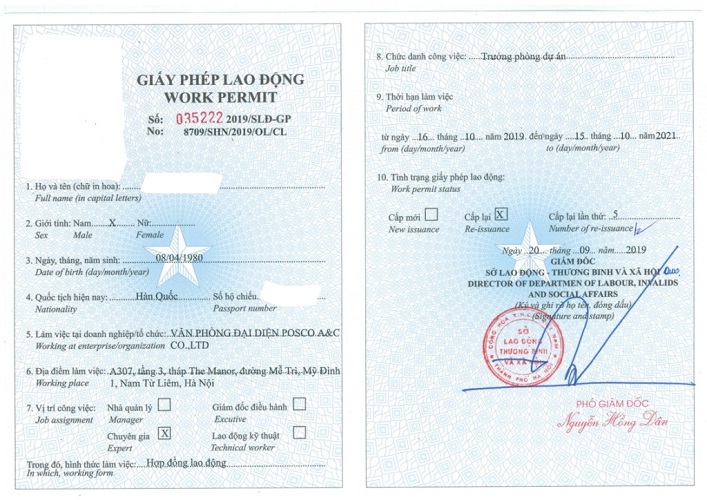Why should we invest in the construction sector in Vietnam?
One of the most profitable investment industries for Vietnamese people is the real estate industry, including the activities of construction companies. The Vietnamese market is currently an attractive destination for investors to invest in the construction industry. So let’s find out why you should invest in the construction sector in Vietnam in the article below.
Construction investment market in Vietnam in 2023
In the generally difficult situation of the whole country, even in other regions, the economy has been stagnant and slow to develop after the COVID-19 epidemic passed, the Ministry of Construction has made efforts to overcome difficulties and achieve bright results. The Ministry has thoroughly grasped the Government’s direction and action motto with the 2023 target “Solidarity, discipline, flexible spirit, creative innovation, timely and effective” and identified 2023 as an important year to perform the 5-year plan (2021-2025).
As a result, in the first 6 months of 2023, the growth rate of the construction industry will reach 4.74% compared to the same period in 2022 (higher than the GDP growth rate of the whole country), the urbanization rate will reach 42%, the general planning rate reached 100%, the average housing area nationwide reached 25.6 m2 floor/person; etc. In addition, nationwide, there are 898 urban areas, including 2 special type urban areas, 22 type I urban areas, 35 type II urban areas, 45 type III urban areas, and 94 type IV urban areas.
The number of social housing in the first half of 2023 also shows impressive numbers. Currently, 9 projects have been started, with about 18,768 units, including 6 projects, with a scale of 7,730 units, and 3 worker housing projects, with a scale of 11,038 units
The Bank’s financial statements also show the bank’s great financial support for borrowers. Specifically, the whole country has disbursed over VND 6,200 billion to about 15,000 loan customers to buy, rent social houses/ worker’s houses, and build new or renovate and repair houses.
Why should you invest in the construction sector in Vietnam?
Advantages and benefits when investing in the construction sector in Vietnam
Looking at the results and efforts of state agencies in the construction and investment industry, these are the reasons why you should invest in the construction sector in Vietnam.
First, Vietnam has opened widely to foreign investors in the sub-sector
- Construction of high-rise buildings (CPC code 512)
- Construction of civil engineering works (CPC code 513)
- Installation work (CPC codes 514, 516)
- Completion work of high-rise buildings (CPC code 517)
- Other construction works (CPC codes 511, 515, 518)
Second, the infrastructure and industrial construction industry has positive signs in 2024 and next year
In 2023, the infrastructure construction industry, especially, highway projects will still tend to increase prices, despite high input material costs. The period 2024-2025 is predicted by experts to become the peak of public investment disbursement, bringing a large recruitment need for infrastructure construction businesses.
In addition, the report from the Vietnam Association of Construction Contractors (VACC), in 2022, recorded a sharp decrease in the number of jobs. The industrial construction industry alone still has stable development momentum even though this industry only accounts for 10 %. Since then, a bright picture for 2024 continues to open up for the industrial construction industry, with 66.7% of businesses placing their trust in this investment industry.
Third, opportunities to develop the construction industry
Global investors have affirmed their commitment to invest more in Vietnam in the coming time. Thanks to that, a large amount of modern technology and highly skilled personnel from abroad will come to Vietnam, helping Vietnam’s construction industry develop and upgrade.
Not only that, other indicators that help grow the construction industry, bringing higher profits to construction companies also increase such as competitive position and capacity, clear vision, and business strategy of the company and also grasp more market trends, quality products with increased competitive prices,…
Fourth, the push from COVID-19 will help the construction industry transform
The emergence of the COVID-19 pandemic caused stagnation and slowdown of the economy, however, this can be considered a push, credit tightening, new production technology, or digitalization process,… helping construction and investment enterprises gradually transform with a completely new, stronger, and more durable appearance.
Although the industry is often passive due to cash flow, raw material sources, profits, partners, etc., at the current stage, companies operating in the construction field are gradually becoming more proactive, and able to find solutions that benefit themselves and affirm their reputation with investors, customers and stakeholders.
Challenges for the construction sector in Vietnam in the coming time
Despite the improvements mentioned, the construction industry in Vietnam in 2024 has challenges that investors need to overcome to have an effective year. Specifically:
The challenge of rising labor costs
Data on production and business trends in the construction industry in the first quarter of 2023 and forecasts for the second quarter of 2023 from the General Statistics Office, balance index of direct labor costs in the first quarter of 2023 compared to the fourth quarter of 2022 will increase to about 12% and is expected that Q2 2023 will increase by about 32% compared to Q1 2023.
Experts analyze that construction recruitment managers in the context of “lack of quantity and poor quality” can develop their workforce by:
- For businesses with limited financial resources, the best option is to hire inexperienced workers. However, doing so will create risks related to the output quality of the finished product, easily incur costs, and increase the workload because of having to repair defective products. Furthermore, the leadership will take more time to train, manage and supervise.
- Companies that choose the more difficult option can continue to use their existing skilled team. If you choose this option, you must consider the cost of maintaining and retaining employees, which increases over time
The challenge is that there is a shortage of quality labor even though the number of workers is increasing
Under pressure from tightened credit and obstacles from legal regulations, a series of projects stalled and halted construction. Not only that, investors also face difficulties in payment schedules, and contractors find it difficult to maintain the same compensation policy as before, leading to many skilled workers not being able to keep their jobs and being forced to move to other industries.
On the contrary, personnel in the construction field understand that finding and building a team of employees who are both well-coordinated and highly skilled is extremely difficult. The recent COVID-19 pandemic has caused most of the skilled workforce to return to their hometowns and not return to the city, while new personnel cannot be replaced in time. This natural employee structure has warned of a labor crisis by 2024.
The challenge of inflation has a two-way impact on the construction industry
After the COVID-19 pandemic, the global economy is in recession, growing from 5.5% in 2021 and continuing to increase by 3.2% in 2022. Vietnam continues to be one of the countries with bright spots in terms of economics with GDP growth in the first quarter of 2023, but inflation is at 3.15%.
According to data published in the first quarter of 2023 by the General Statistics Office, the price index of raw materials, fuel, and construction materials in the first quarter of 2023 increased by 1.08% compared to the previous quarter and increased by 3.77% compared same period in 2022. Inflation has caused the balance of supply and demand to change in a negative direction. On the one hand, the price of construction materials increased, but the demand for some types of materials began to decrease.
Phone: (+84) 961 366 238
Email:
- vphn@siglaw.com.vn
- vphcm@siglaw.com.vn
Headquarters: No.44/A32-NV13, Gleximco A, Le Trong Tan Street, Tay Mo Ward, Ha Noi.
Southern branch: No.103 – 105 Nguyen Dinh Chieu Str., Xuan Hoa Ward, Ho Chi Minh.
Central branch: 177 Trung Nu Vuong, Hai Chau District, Da Nang City
Facebook: https://www.facebook.com/hangluatSiglaw










